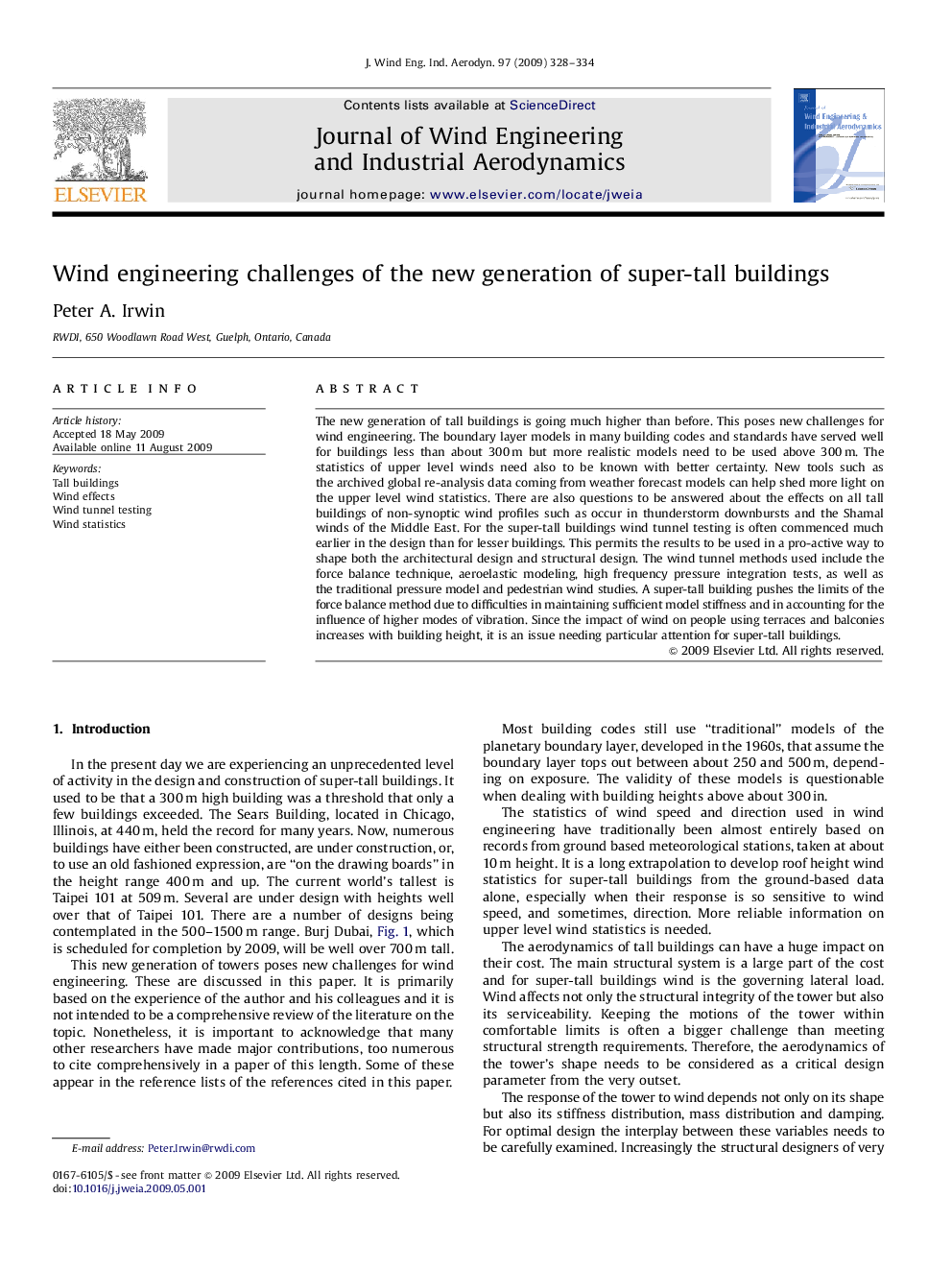| Article ID | Journal | Published Year | Pages | File Type |
|---|---|---|---|---|
| 293171 | Journal of Wind Engineering and Industrial Aerodynamics | 2009 | 7 Pages |
The new generation of tall buildings is going much higher than before. This poses new challenges for wind engineering. The boundary layer models in many building codes and standards have served well for buildings less than about 300 m but more realistic models need to be used above 300 m. The statistics of upper level winds need also to be known with better certainty. New tools such as the archived global re-analysis data coming from weather forecast models can help shed more light on the upper level wind statistics. There are also questions to be answered about the effects on all tall buildings of non-synoptic wind profiles such as occur in thunderstorm downbursts and the Shamal winds of the Middle East. For the super-tall buildings wind tunnel testing is often commenced much earlier in the design than for lesser buildings. This permits the results to be used in a pro-active way to shape both the architectural design and structural design. The wind tunnel methods used include the force balance technique, aeroelastic modeling, high frequency pressure integration tests, as well as the traditional pressure model and pedestrian wind studies. A super-tall building pushes the limits of the force balance method due to difficulties in maintaining sufficient model stiffness and in accounting for the influence of higher modes of vibration. Since the impact of wind on people using terraces and balconies increases with building height, it is an issue needing particular attention for super-tall buildings.
